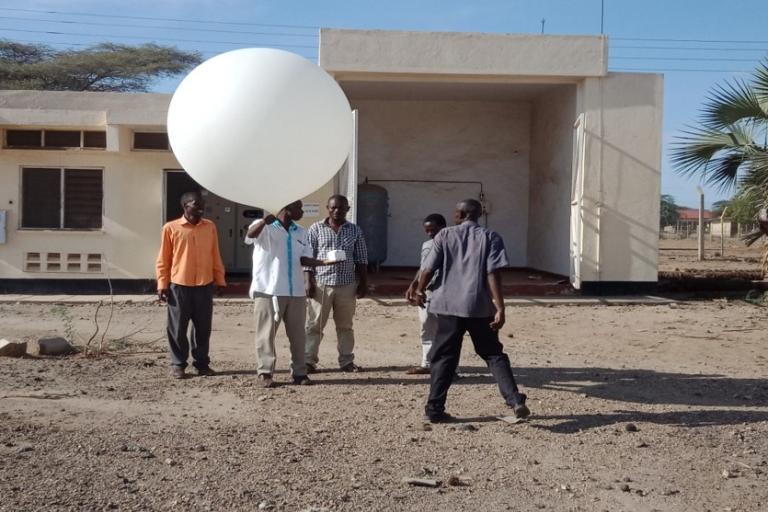Kenya's Commitment to Advancing Early Warning for All in Africa
- Author(s):
- By H.E. Dr William Ruto, President of the Republic of Kenya

I extend my sincere congratulations to the World Meteorological Organization (WMO) on the celebration of the 75th Anniversary as a specialized agency of the United Nations. This·important milestone marks decades of scientific excellence and international cooperation. Through its vast network of National Meteorological and Hydrological Service (NMHSs), WMO has provided critical support to its Member States by enabling access to policy and standards for the provision of high quality weather and climate services, and early warning systems that underpin sustainable development and informed policymaking. The WMO continues to stand out as a global leader in driving climate action.
As we commemorate this milestone, I wish to reflect on the Early Warnings for All (EW4AII) initiative and the progress made across the African continent with a particular focus on Kenya's role and commitment. Multi-hazard early warning systems will be the way to go. It is more than a dream to me that we shall reverse the statistics that indicate nearly 60% of the population in Africa lacks access to these systems, with most significant gaps in small islands developing states and least developed countries.
In Kenya, we have experienced the devastating episodes of severe weather that are clear consequences of climate change. Failed rains, resulting in food insecurity and destroyed livelihoods and displacement of whole communities by floods are some of the manifestations. This is why multi-hazard early warning systems, linked with anticipatory action, are not optional; they are essential tools for our resilience, adaptation, and inclusive growth.
During the inaugural Africa Climate Summit held in Nairobi, the African leaders made a declaration on climate change and gave a call to action, acknowledging that climate change is the single greatest challenge facing humanity and the single biggest threat to all life on Earth, demanding urgent and concerted action from all nations to lower emissions and reduce the concentration of greenhouse gases in the atmosphere.
During the Summit, I was honoured with the appointment by WMO as the Regional Champion for the EW4AII initiative to strengthen early warning systems and climate information, services, as well as taking early action to protect lives, livelihoods and assets, and inform long-term decision-making related to climate change risks. This recognition strengthens Kenya's resolve to lead from the front, not only in championing the establishment of early warning systems but also in ensuring that no one is left behind in the face of climate-related threats.
Let me also commend the indispensable work of our National Meteorological and Hydrological Services. In Kenya, the Kenya Meteorological Department (KMD) plays a pivotal role in delivering timely, credible weather and climate forecasts. Our NMHSs remain the authoritative voice in early warning, and their integration into national disaster risk management frameworks is critical. I acknowledge WMO's consistent efforts to enhance the capacity of NMHSs across Africa to provide critical and essential weather and climate information.
We appreciate the strategic leadership of the African Union (AU), which has aligned climate resilience and early warning priorities through the AU Climate Change and Resilient Development Strategy and Action Plan, the Integrated African Strategy on Meteorology, the Africa Framework for Disaster Risk Reduction, and the Nairobi Declaration adopted during the Africa Climate Summit.
I further appreciate the EW4AII implementation toolkit developed by global partners. This practical guide is enabling countries to conduct stakeholder mapping, national consultations, gap assessments, and action planning. I am pleased to report that 22 African countries have already begun implementing this process, including Burundi, Chad, Comoros, Djibouti, Ethiopia, Ghana, Liberia, Madagascar, Mauritius Mozambique, Niger, Rwanda, Seychelles, Somalia, South Africa, South Sudan, Sudan, The Gambia, Sao Tome and Principe, Tunisia, Uganda and United Republic of Tanzania.
I note that WMO has taken the lead with many programmes that support detection, observation, monitoring, analysis and weather forecasting including impact-based warning. Other programmes implemented include upgrading and expanding hazard monitoring, establishing twinning programmes and triangular cooperation among countries, exchange of best practices, generating and disseminating warnings, increasing access to satellite data and products.
Kenya participates in some of the initiatives that are underway to support the value chain of providing early warning services. My Government is ready to support the establishment of infrastructure to support data collection to improve weather forecasts, early warning systems and climate information services. One model that works in Kenya provides climate and weather services downscaled to each of the 47 counties – this is a model that all the other countries should emulate.
WMO is also spearheading numerous technical programmes including hazard monitoring and impact-based forecasting to regional cooperation, satellite data access, and the exchange of best practices. In Kenya, we are actively exploring how such support can bolster our national capacity and integrate scientific data with local knowledge.
Moreover, Kenya is embracing digital innovation, sparing no efforts to modernize climate services. KMD is rapidly digitizing its services, expanding community outreach, and supporting farmers, local governments, and development actors with tailored weather and climate information.
In conclusion, the Early Warnings for All initiative is not merely a policy agenda it is a lifeline for millions of Africans. Kenya stands firmly in support of this initiative, recognizing that resilience is built on information, preparedness, and cooperation. Through strong partnerships, targeted investment, and bold leadership, we can build a continent where every citizen is protected by timely, reliable early warning systems.
Let us seize this opportunity together to secure a safer, climate-resilient Africa for current and future generations.


